Ancient Rhythm of Suzhou| Leisure and leisurely, the fireworks in the world are joy
Prelude to Suzhou
"There are no dense halls here, only gardens. There was no battlefield here, so only a few city gates were built.
The flowing water here is too clear, the peach blossoms here are too gorgeous, and the singing here is a bit provocative.
The snacks here are too sweet, the women here are too quiet, there are too many teahouses here, the bookshops here are too dense, and the poems here lack the hoarse voice of the strong warrior of Yi Shui..."
Yu Qiuyu once wrote in "White-haired Gusu": Suzhou lacks the spirit of the king of Jinling.
And I, who have been to Suzhou twice, feel the same way. This spring I walked into Suzhou for the third time
I was deeply impressed by the slow life of the people of Suzhou, Suzhou's exquisite Suzhou culture, and the beauty and exquisiteness of Suzhou gardens in the world.
Trip suggestions
Day1
Morning: Silk Museum
Afternoon: Pingjiang Road Historical District (Recommended check-in: Pingtan Museum, Kunqu Opera Museum, Qiyuan)
Evening: Visit Guanqian Street on Pingjiang Road at night (recommended Guanqian Street for accommodation, it is very convenient for dining and shopping)
Day2
Morning: Qilishantang, Xiyuan Temple (Lunch suggestion: Qilishantang)
Afternoon: Lion Grove
Evening: Night tour of Humble Administrator's Garden
Day3
Morning: Yipu Huanxiu Villa Yiyuan
Afternoon: Subo Taiping Rebellion's Palace Twin Towers Market
Wonderful preview


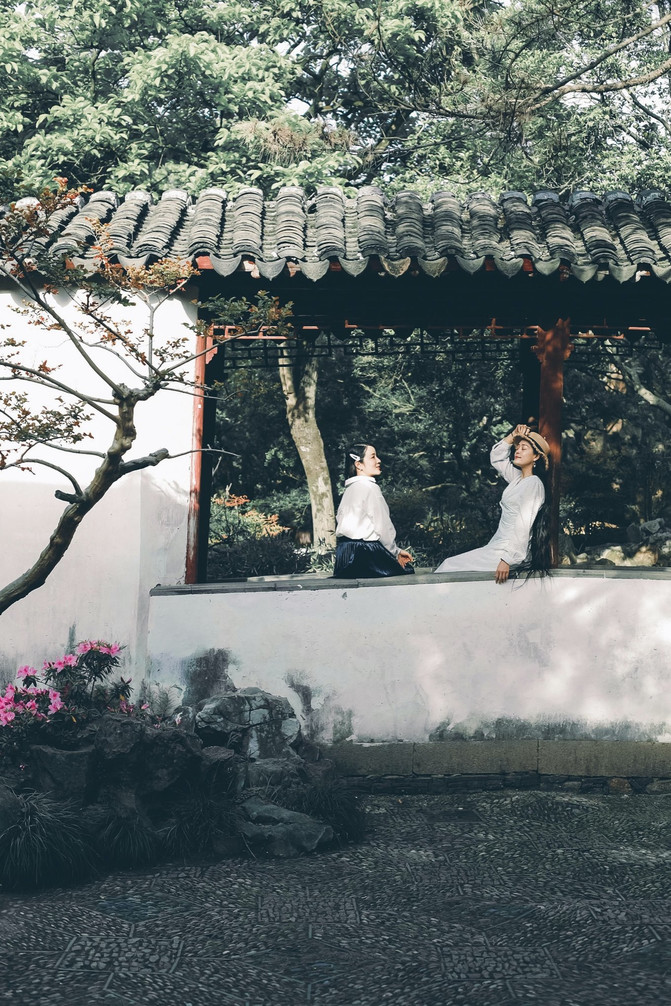







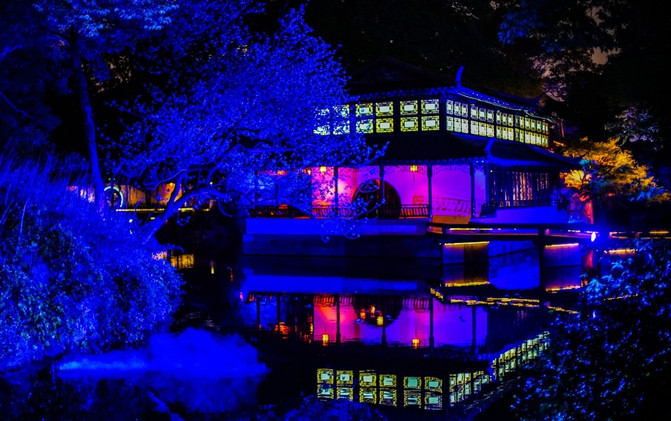


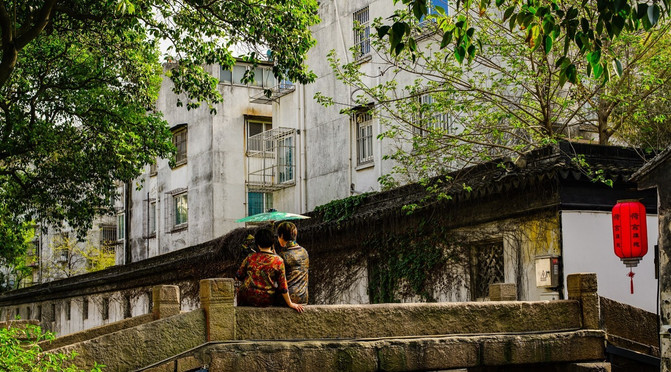
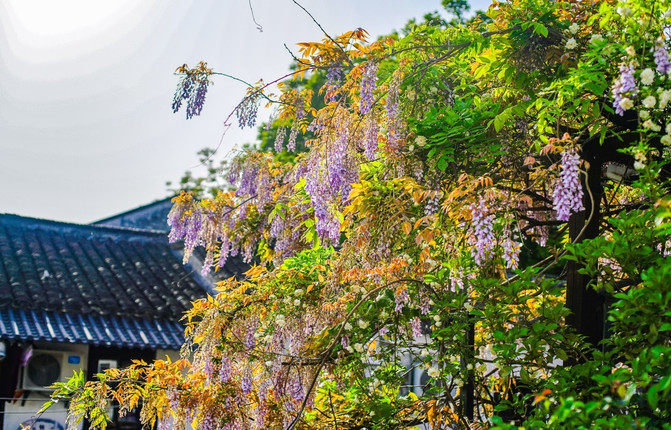



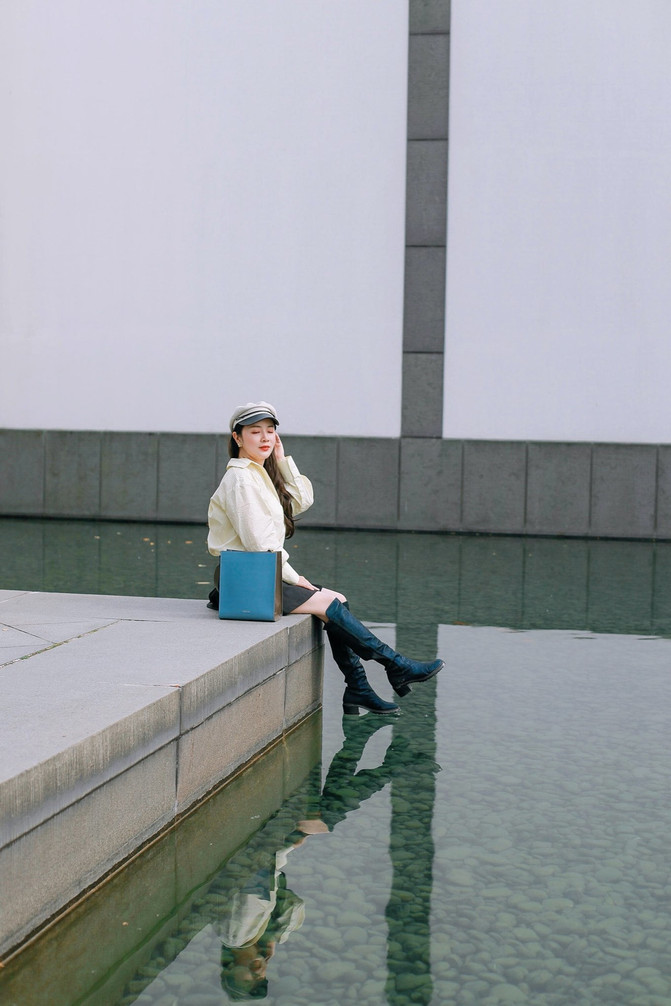



The beauty of Suzhou gardens, lotus garden
In Suzhou City, the Pingtan sound corridor returns low, concealing the mountains and rivers, and a city called Suzhou Garden is built in the misty rain south of the Yangtze River.
When I mention Suzhou, the first thing that comes to mind is the garden with small bridges and flowing water.
In Suzhou gardens, a pavilion, a table, and a pavilion are all engraved with Suzhou and Wu culture.
With white walls and black tiles, winding paths, still water flows deep. There are many stories and connotations in the courtyard.




Spring Suzhou gardens are beautiful, but there are also really many people. So this time I specially visited a different niche Suzhou garden route. Because there are few people, I have more room to appreciate its beauty.
Start with lotus garden.


Yuyuan, formerly known as Sheyuan, was built in the early Qing Dynasty and was renamed "Yuyuan" at the end of the Qing Dynasty. This garden is not as famous as Regent Garden and Lion Grove, but it is small and exquisite. This garden is named "Yan Garden" because there is a garden built on the east and west sides of the house, and "couple" and "couple" are connected, implying the meaning of a couple returning to the fields and living in seclusion. When Shen Bingcheng lost his wife and retreated into Gusu, he met his close friend Yan Yonghua, and a poetry bibliophile met a talented woman full of poetry.
"A beautiful couple lives in Yuyuan, and a poem city is built in the city." The story of Yuyuan begins from then on.







The garden faces the river on three sides and along the street on one side. The total area of the garden is about 8000 square meters. The Yuan Garden is centered on the homestead with four halls, and the east and west gardens are connected to the residence by a large building. In fact, the entire garden is not large in area, but the scenery is really exquisite. There are poems that describe the beauty of lotus garden like this.
Green water soup surrounds lotus garden, and courtyards and pavilions smoke willows.
The orchids and green bamboos present charm, and the windows are cut and the scenery is displayed.






tips
[Transportation] Metro Line 1 Xiangmen Station
[Tickets] Peak season 25?, Off-season 20? (Half price for students)
[Opening Hours] 7:30~17:00
[Recommended play time] 1~2 hours
The beauty of Suzhou gardens, art gardens
The art garden preserves the style, layout and gardening techniques of the Ming Dynasty gardens. It wins with simplicity, simplicity, natural simplicity, exquisiteness, and the garden scenery is tranquil. It can be called a masterpiece among the residential gardens of the Ming Dynasty.
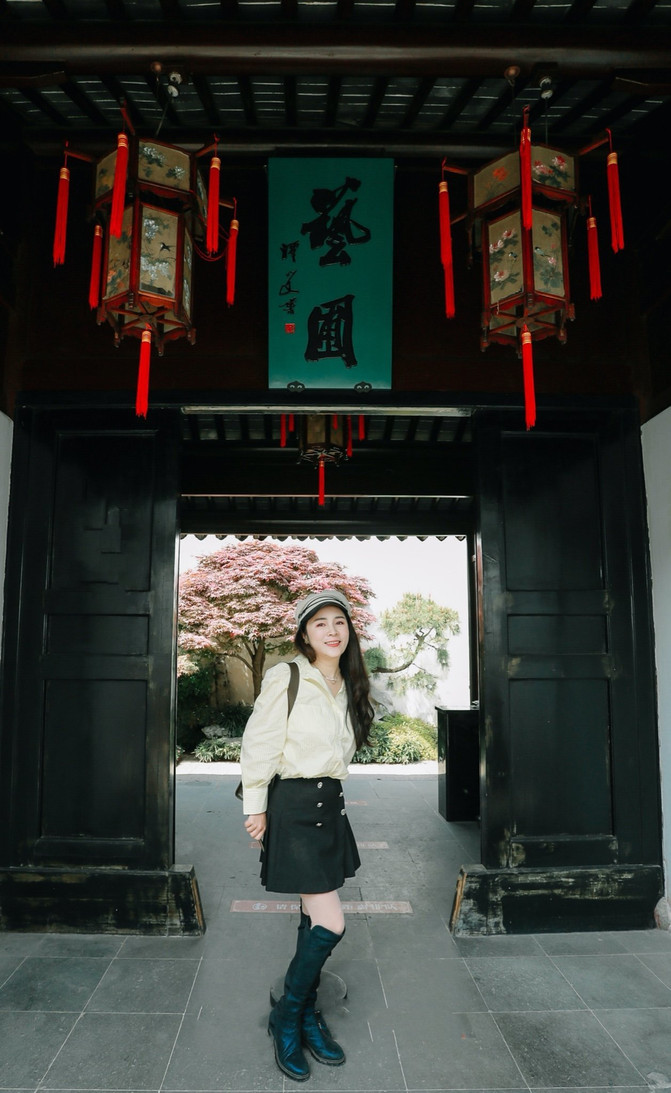


As soon as I entered the art garden, I felt the blooming roses. When you enter the garden, you will find a cheerful scenery and a simple style. It is both varied and natural. It is a common way of stacking mountains and managing rivers by gardeners in Suzhou during the late Ming and early Qing Dynasties. From the layout of mountains and rivers, the opening of pavilions to the detailed treatment of stones and trees, the simple and elegant style characteristics are analyzed, and the basic concept of gardening is outlined with concise techniques. Therefore, the picture appears open and flowing, and there is no sense of congestion or cramping.



Several small gardens are arranged in the southwest corner of the art garden as auxiliary scenery. Based on the characteristics of the small gardens, the gardeners create a garden art landscape with empty mountains, vast waves, deep forests and ravines, and empty pavilions and pavilions, so as to achieve the effect of "absorbing thousands of acres of ocean, harvesting the brilliance of the four seasons". You can feel the painting on the opposite side from the inside of the building. Coupled with various trees, bridge cables, and pavilions, each frame is a wonderfully thoughtful and complex picture scroll.


tips
Address: No. 5, Wenya Lane, Changmen, Jinchang District
tickets:10 yuan
The beauty of Suzhou gardens, Huanxiu Villa
Huanxiu Villa is not large. Although it covers an area of 3 acres, it is one of the first well-known gardens in Humble Administrator's Garden. Huanxiu Villa integrates traditional arts such as architecture, gardening, sculpture, poetry and calligraphy, and gray carving. Pine trees, cypresses, crape myrtle, and magnolia trees are planted around the hall. The garden view is mainly mountains, supplemented by pool water. Although there are not many buildings, it highlights the characteristics of the garden buildings that are majestic, strange, dangerous, secluded, beautiful and open.



Looking at the whole garden, there are mountains and heavy waters restored, and majestic halls; when you enter it, you will change the scenery and change everything.
In the northwest of the park are exquisite stone walls, in the north are the "Buqiu Mountain House" facing the water, and in the northeast are the "Half a pool and Autumn Water and a Mountain Pavilion", changing the scenery with each step.
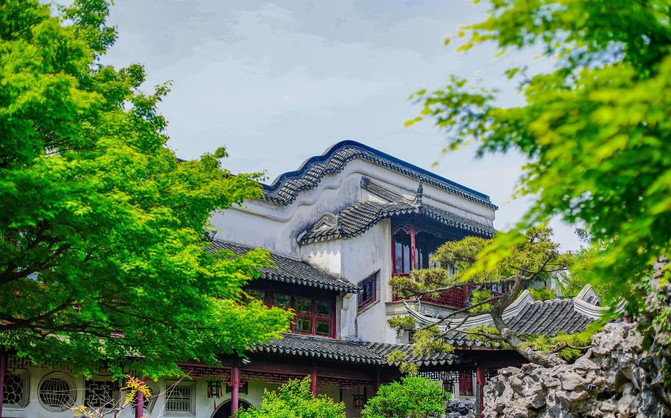
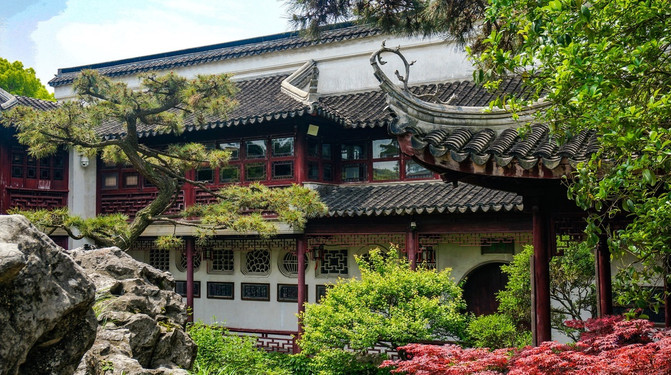

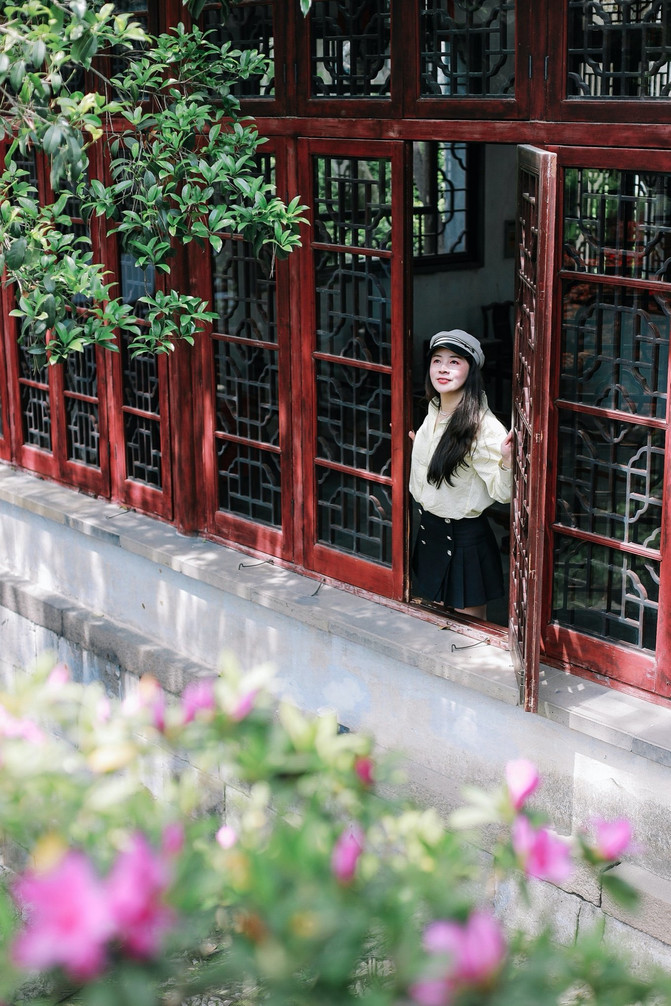
Among them, the lake stone rockery is the most in China, especially the rockery stacked by Ge's, which is a unique one. It covers an area of less than half an acre, but it is so close to each other that there are thousands of rocks and ravines around the mountains, making it easy to move around. The main peak is abruptly in the southeast, and the secondary peak is bowed in the northwest. The pool of water is surrounded by green trees. Ge's stacked mountains use the big axe chopping method to be concise and powerful, with a rigorous structure, scattered and orderly, and is known as "unique in the south of the Yangtze River".





Garden master Chen Congzhou said: "The rockery of Huanxiu Mountain Villa is suitable for selection, and there is a way to stack mountains. Gardeners do not see this mountain, just as poetry learners do not see Li Du.
However, in order to protect Qizhen, it is no longer allowed to enter it.
The ponds are located in the west and south of the garden, winding like belts. Huanxiu Villa dug ponds to divert water, which is very interesting, making the mountains have veins, the water is source, and the mountains divide water. It also uses water to make the mountains, and the water turns around the mountains. The mountains are alive because of the water, and the gardens are close to each other. The scenery is full of vitality.






Probably because it is too "small", this is also the one with the fewest tourists among the Suzhou gardens I visited during the day, so I can take a quiet rest in this garden and take pictures from various angles. It's a good thing! No wonder I met so many young ladies in Hanfu who came to take photos and check in.
tips
Address: No. 272 Jingde Road, Suzhou City
Tickets:15 yuan
The beauty of Suzhou gardens, Yiyuan
Yiyuan was built in the late Qing Dynasty. Gu Wenbin, Ningshaotai Road in Zhejiang Province, built it on the ruins of Wu Kuan, Shangshu of the Ming Dynasty, for nine years and spent 200,000 taels of silver to complete it. It takes the meaning of "Brother Yiyi" in the Analects of Confucius, and is named Yiyuan.
There is a small gatehouse on the north side of the park, which is exquisite and unique. After entering the gate, you will enter the park. You will see winding rockery, faint pavilions and pavilions, clouds and pear rain, swaying bamboo shadows, birds singing and flowers fragrance, and the scenery is elegant and pleasant.




Yiyuan covers a small area, but it can absorb the strengths of each garden and skillfully place mountains and rivers to form its own style. The layout of the park is separated by a compound corridor. The east is dominated by buildings. Lake stones and flowers and trees are planted in the courtyard. The western pool is in the center, surrounded by rockery, flowers and trees, and buildings.
It is solemn and elegant, and has unique craftsmanship. The scenery in the garden is beautiful and impressive.


Qingyin Pavilion is especially the best garden structure. Qingyin Pavilion has high eaves and winding pavilions, auxiliary stones guide water, and flows around the pavilion. The blue tiles on the red windows and the small animals on the ridge of the pavilion are lifelike and lifelike. Several square stone pillars surround the pavilion, giving people a sense of simplicity and solemnity.




Due to the late establishment of the park, it absorbed the strengths of various gardens: for example, the complex corridor imitates the Canglang Pavilion, the pool imitates the net master's garden, the rockery learns the Huanxiu Villa, the cave valley imitates the lion forest, and the dry boat imitates the Humble Administrator's Garden. The layout is natural, the pavilions, pavilions, corridors and boats are small and elegant, and the mountains and ponds are sparse and pleasant. It can be called a boutique in the garden.
tips
Transportation:
Take Metro Line 1 or Line 4 to Leqiao Station, exit Exit 8, and you will reach Yiyuan. Or take buses such as Line 4, 1, 8, 38, and 933 to Leqiao North Station and get off.
Tickets are 15 yuan.
Opening hours: 07:30-16:30 (Monday-Sunday, January 1-December 31)
The beauty of Suzhou gardens, Lion Grove
Lion Forest is one of the four famous gardens in Suzhou. In the second year of the Yuan Dynasty, Zen Master Tianru built the Bodhi Orthodox Temple in memory of his teacher, Zen Master Zhongfeng. Because there were many strange rocks in the garden shaped like lions, it was later renamed "Lion Forest". It has a history of 650 years.




Lion Forest is different from Suzhou gardens in its gentleness and depth. It is famous for its strange peaks of lakes, rocks and dangerous caves. It is known as the "Rock Kingdom". The lion forest is formed into a rectangle slightly wider from east to west. It is mountainous in the southeast and watery in the northwest. It is surrounded by high walls and deep houses, surrounded by curved corridors.
With the pool as the center, houses are built over mountains, flowers are moved and trees are planted, and pavilions are built over bridges, making the whole park a compact layout and full of the artistic conception of "standing in the mountains and forests".




The mountains in the eastern part of the park are all built with lake stones, and use the Buddhist statue Leo as a mimicry shape to abstract and exaggerate. The mountain is divided into three layers, upper, middle and lower, with twenty-one caves and nine winding paths. There are "Hanhui","Tudan","Yuli","Angxiao" and "Lion" peaks on the top of the mountain, each with a strange demeanor. The branches of ancient cypress and ancient pine trees on the mountain are vigorous. The lake has exquisite rocks, the caves and ravines are winding, and they spiral in twists and turns, as if entering a maze. It is known as the "Eighteen Scenes of Taoyuan". It is also the most distinctive place in Lion Forest. can be described
The peaks outside the stone are undulating and complex;
The stone is winding and deep, and the stone is deep and unknown.



In the garden, the windows and eaves are decorated with thin shadows that move into the painting, and are unique with stone lions.

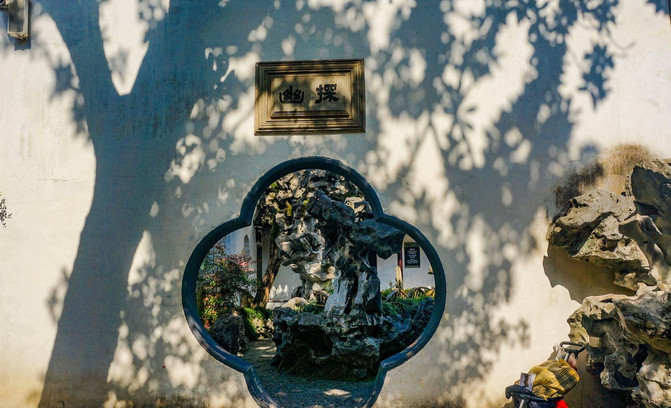


What kind of grand plan is it to pile all the strange mountains and rocks in the world into one courtyard? All kinds of lions, large and small, are either conspicuous, complex, or wild. There is a different style everywhere. This kind of beauty with claws and claws is the heroism in Suzhou's bones under its restraint.
tips
[Transportation] Subway Line 4 "Beisi Tower" Station
[Tickets] Peak season is 40?, Off-season 30? (Half price for students)
[Opening Hours]
7:30~17:30 (March 1 ~ October 15)
7:30~17:00 (October 16 ~ the end of February of the following year)
[Recommended play time] 1~2 hours
Recommended tourist order for Lion Grove:
Yanyutang--Xiaofang Hall--Yifeng Zhibai Xuan--Ancient Five Pine Garden--Hushan Pavilion--Hualan Hall--Zhenqu Pavilion--Shifang--Dark Fragrance Shuying Building--Flying Waterfall Pavilion--Wenmei Pavilion--Shuangxiangxian Pavilion--Fan Pavilion--Wen Tianxiang Stele Pavilion--Imperial Stele Pavilion--Xiuzhu Pavilion--Lixuetang---Exit
The beauty of Suzhou gardens requires elegance
Humble Administrator's Garden was built by Wang Xianchen, a scholar during the Hongzhi period of the Ming Dynasty, after he retired to Suzhou. Wen Zhengming used the aesthetic taste of a painter and used traditional pen and ink to outline the overall layout of the entire garden. It took more than ten years to finally complete the construction of this garden. A masterpiece that later became famous in Jiangnan.
The name of the garden is "asking for the name and knowing the heart", which is taken from Pan Yue's "Idle Residence Fu" of the Western Jin Dynasty. The profound meaning of these three words alone is enough to make people ponder for a while.

Humble Administrator's Garden is a representative work of classical gardens in the south of the Yangtze River. Together with Beijing Summer Palace, Chengde Summer Resort, and Suzhou Lingering Garden, it is known as the four famous gardens in China. It is said that Cao Xueqin once lived here, and many details of the Grand View Garden in her writing come from Humble Administrator's Garden.
Wen Zhengming's design is mainly water-based, sparse and plain, and almost natural garden style, which strongly expresses the aesthetic conception of Chinese landscape painting. Humble Administrator's Garden is divided into three parts: east, middle and west. The middle part is the main scenic spot of Humble Administrator's Garden and is the essence. Its overall layout is centered on the pool, with pavilions and pavilions built on the water, and some pavilions and pavilions are straight out of the water, with the characteristics of Jiangnan water towns.

Under its reputation, the Humble Administrator's Garden in spring is really a predictable hustle and bustle, but have you ever tried waiting quietly to visit Humble Administrator's Garden at night?
This time, I had the honor to experience this year's newly opened night tour experience project of Humble Administrator's Garden art,"Seeking Elegance in Politics". It takes the central park, the most essence of Humble Administrator's Garden, as the display space, takes elegant life as the main line, and uses multimedia technology to reconstruct various elegant scenes and move forward along the space to create elegance, elegance, and elegance, show the dynamic aesthetics of night gardens, and review the literary elegance and state of mind of ancient literati and scholars.

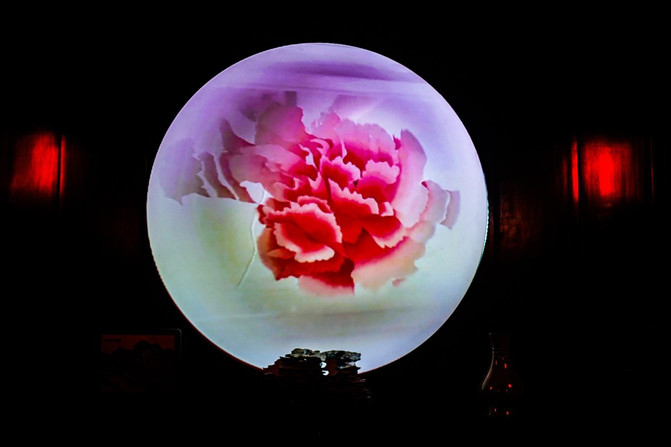
Chihiro invites the bright moon, time embraces the secluded mountains, and traces back five hundred years of the clear charm of the gardens and ponds. There is always a lot of leisure in my humble government, but who is with you? It inspires Lin Quan's century-old classical philosophical thinking.

Buildings such as pavilions, terraces, pavilions, buildings, and halls in the park use cross-media technology to show the moonlit styles of different buildings; and because the mountains and rivers add elements of light and sound, they create a three-dimensional Jiangnan landscape painting that connects the five senses and reflects the past and present. During browsing, the shadow of light and the sound of Jiushao, the interaction of audio and video, and the continuous flow of time is paved out.


The world in the garden is not willing to be lonely,
Canglang Pavilion,"The water of the waves is clear, it can wash my tassel; the water of the waves is turbid, it can wash my feet",
The rain-listening building where "the residual lotus is left to listen to the sound of the rain", and the Qingfeng Pool Pavilion where "the breeze rises and the pool is cool"...
This is a performance that uses images, sounds, and light effects to activate the neglected and hidden classical gardening aesthetics, demonstrating that the oriental aesthetics of the garden itself tells is a perceptual scene with multiple interactions between time and space.

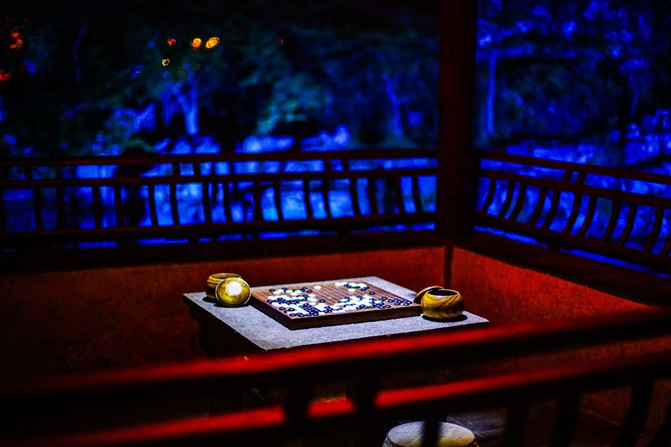
The universe is vast and the stars are spinning. Visiting Gusu at night is an invitation that spans five hundred years. It is an artistic journey between vision and soul. This hour allows us to let go of the obstacles of the worldly world and let our souls live in the garden. Get habitat and clarity.

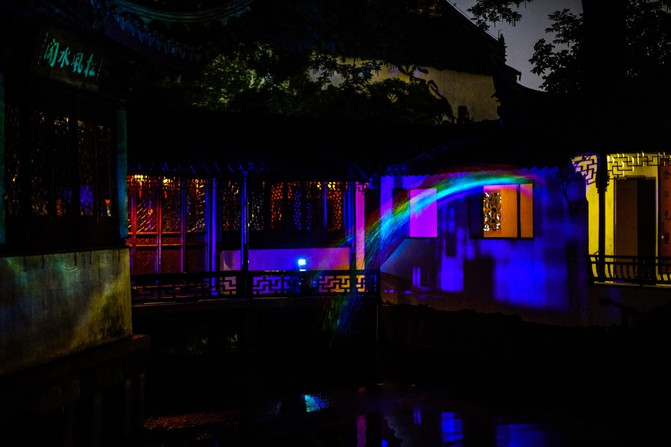
Accompanied by the bright moon, accompanied by the breeze, looking for the land of forests and forests, visiting the elegance of mountains and rivers of literati and hermits; borrowing the method of light and sound to reshape the spatial poetics of Chinese Oriental gardening ", and finally finding your own" spiritual elegance ".

Tips
? Address: No. 178 Northeast Street, Suzhou City, next to the Suzhou Museum.
Transportation:
Rail Transit Line 4 will take the direction of Longdaobang to the Northeast Exit of No. 4 Beisita Subway Station or Rail Transit Line 1 will take the direction of Mudu to Exit 3 of Lindun Road
Visiting time: 19:00-22:00
Ticket price: 198 yuan during the week, 228 yuan on weekends
Number of people limited: Night tours are limited, and reservations must be made in advance on weekends and holidays.
Enter the park according to the scheduled time, and the duration is 1 hour

Gardens are "urban forests" full of natural interest in the city. People living in a busy city can enjoy the "joy of mountains, rivers and forests" of nature as soon as they enter the garden. As the saying goes,"you can enjoy the joy of mountains and forests without going out of the city, and you can enjoy the joy of forests and forests while living in a busy city."
The mountains in spring are pale with ink, the mountains in summer are green, the mountains in autumn are clear, and the mountains in winter are silent.
Take the solar terms and the four seasons as the clothes, and the mountains and stones as the bones.
Taking water, wood, flower plants as the meat, poetry and history as the soul,
Suzhou's gardens, this small square world, have eventually become world-class cultural and artistic classics.
Fireworks in the world, Suzhou Slow Life: Pingjiang Road
Suzhou, which is born near the water, has a very soothing pace of life. Whether it is the riverside tea stall in the sun, the restaurants and restaurants surrounded by the water everywhere, or walking on the street in the neon lights, you can experience the reality of life and happiness. If you don't have time to experience it in detail, go for a walk on Pingjiang Road and Qilishantang, or go to Xiyuan Temple for a stroll and eat at Shuangta Market.
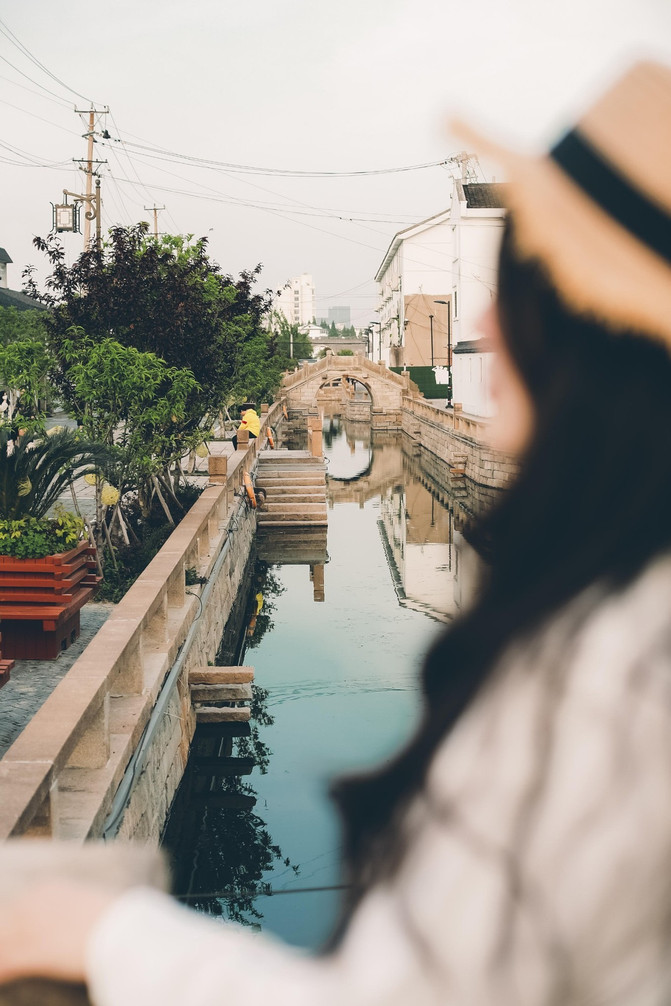

In the Song Dynasty, Suzhou was called "Pingjiang", which is the origin of the name Pingjiang Road. As the most watertown neighborhood in Suzhou, the 1.6-kilometer-long Pingjiang Road still retains the traditional pattern of more than 800 years ago. It can be called the epitome of the ancient city and still maintains infinite vitality. Behind the tourists, more than 800 Suzhou families enjoy the leisurely life of the water town.



There are small bridges and flowing water, pink walls and black tiles, and a building layout with water and land parallel and adjacent river streets. There is a river on the street, a boat in the river, and a boat lady on the boat, singing the boat song of Wu Nong soft language. It shows a vivid picture of "when you come to Gusu to see each other, everyone is sleeping on the river". Interweaving the charm of Suzhou.



The old houses in the old neighborhood are side by side with the river. There are many stone tables, stone bridges and stone chairs along the way. If you are tired from shopping, you can sit down and take a nap. The old houses on the roadside have turned into rows of shops, with an antique flavor and many small shops with unique characteristics of the times. For example, stroll into the cat sky and drink a cup of coffee.

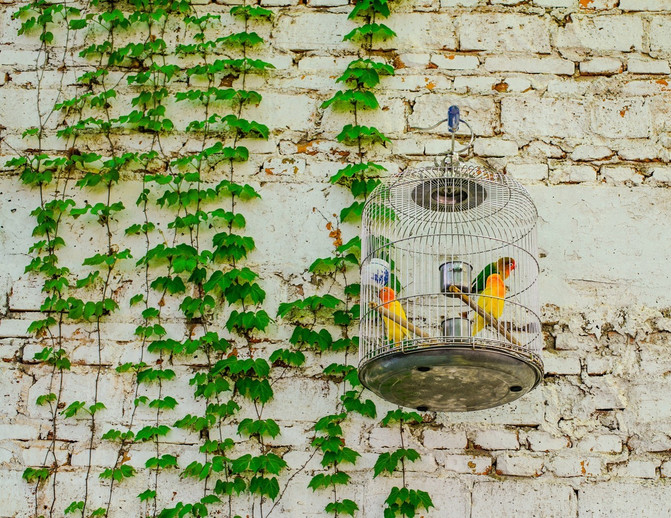





Too many tourists and too many shops will miss the solemn charm of the thousand-year-old city.
So I walked through it, ignoring the dazzling array of shops and the tourist-filled streets. I looked at the river and saw the wood pulp making ripples layer by layer.



I prefer to discover small streets and alleys outside the main street, dusty bricks and tiles, narrow stone streets, and more than 2500 years of old city walls, mottled with passing years. People casually rested by the river, ate tea, drank melon seeds, and chatted. So we randomly found a restaurant, ordered a few home-cooked dishes, and slowly tasted the Suzhou time under the afternoon sun.




The Forbidden City has little free space and many water alleys and small bridges
Walking through the ancient bridge holes and looking at the lives of people on the river, mottled traces of history flow around you, forgetting the hustle and bustle of the city and the unnecessary worries of life.

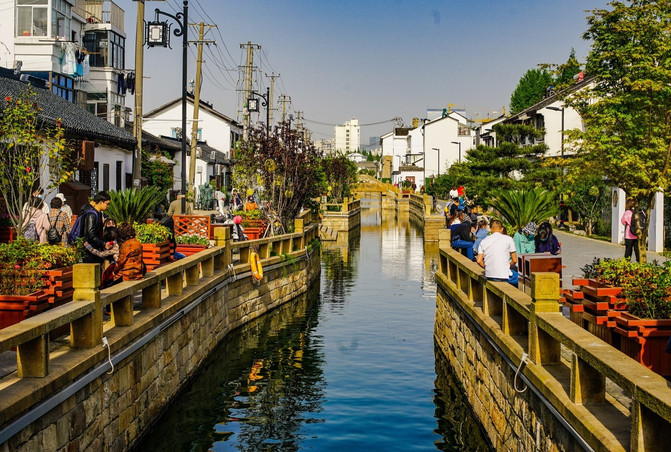




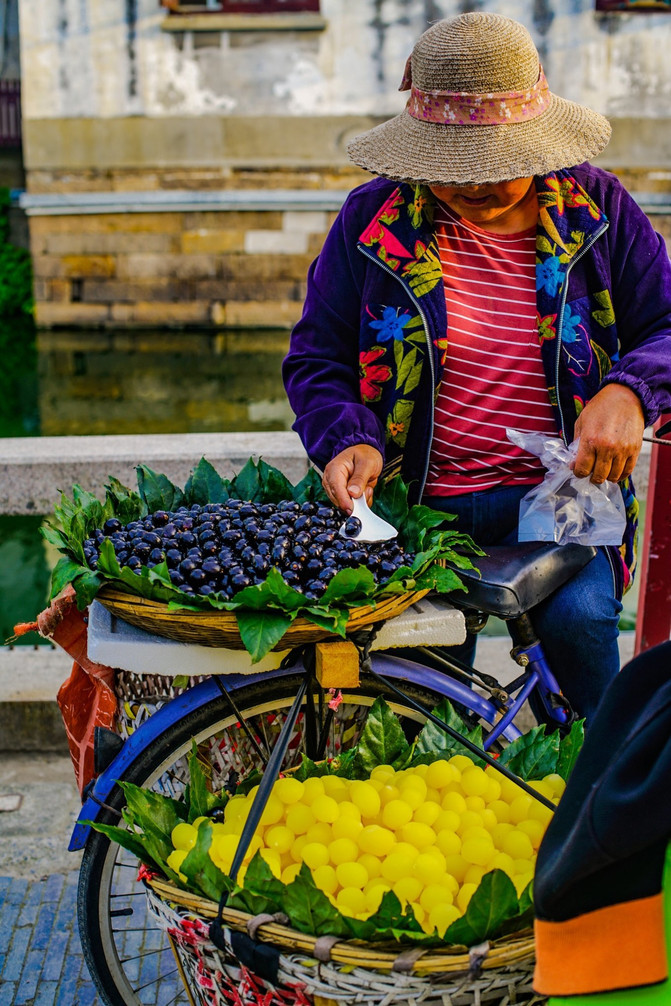

Pingjiang Road at night is more worth wandering around. The night is dense and cruise ships shuttle through the neon; the beautiful lights on both sides not only reflect the beautiful scenery, but also reflect the prosperity of the past. There were small songs from the tavern on the shore. Occasionally one or two soft words of Wu Nong mixed with the sound of erhu or pipa floated out of the attic,
Listen carefully, and the ancient and distant Wu Yun seems to be ringing softly in your ears.
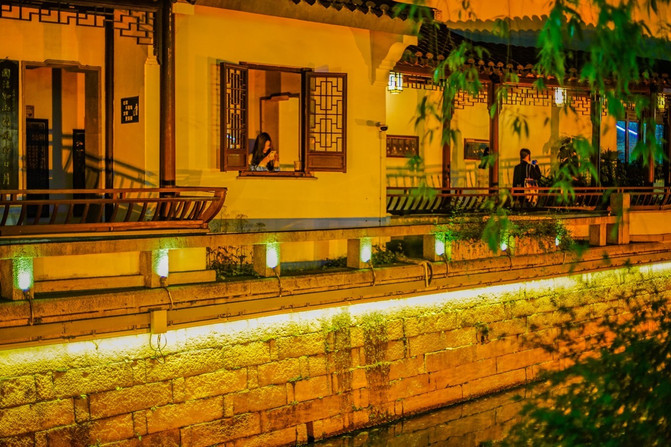

You can walk into a restaurant with Pingtan, order a few Suzhou delicacies, and then listen to a few Suzhou Pingtan songs.
The genre, tone, techniques, inheritance and even the content of the song are no longer important. The old mood of Suzhou has been gently shredded and soaked in the tune. The life of a family in the pillow river gradually reappears before your eyes:
Near the cooking, fragrant rice knows the river lotus,
Peach blossom flowing water mandarin fish fat,
The night market sells lotus roots,
Spring boats carry kira...
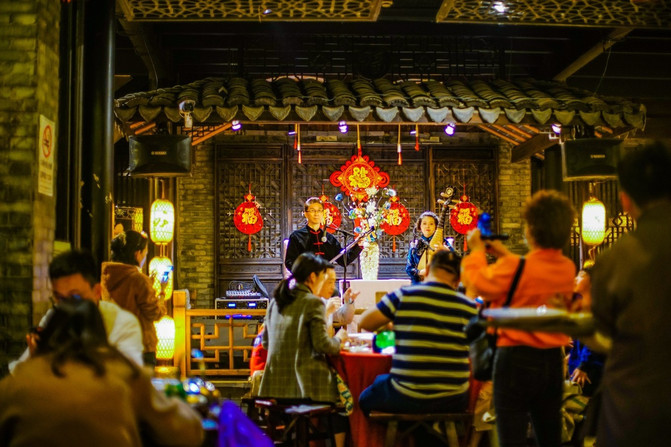


tips
Tickets: Free
traffic
Subway: Line 1 to Xiangmen Station or Lindun Road Station and walk 300 meters to the southern end of Pingjiang Road
Bus: Take No. 301 and No. 305 and get off at Pingjiang Road Station
Opening hours: All day
Fireworks in the world, slow life in Suzhou: Qili Mountain Pond
Shantang Street is located in the northwest of the ancient city of Suzhou, east to Changmen, the "first-class and second-class rich and romantic place" in the red dust, and west to Tiger Hill, the "No. 1 scenic spot in Wuzhong". It is about 3600 meters long, or about 7 miles, so it is called "Qilishantang to Tiger Hill".
Shantang Old Street is 360 meters long. Although it is only one-tenth of the size of Qili Shantang, it is the essence of Shantang. It is called the epitome of old Suzhou and the window of Wu culture.



Most of the ancient buildings on both sides of Shantang Street are mostly buildings from the late Qing Dynasty and the Republic of China. They are architectural groups composed of several drops and several drops, vertically and horizontally. This place was once called by Cao Xueqin in the first chapter of "Dream of the Red Chamber" as "the most prosperous and romantic place in the world of mortals."



The characteristics of Shantang Street with many rivers and bridges fully reflect the characteristics of streets and alleys in Suzhou, a water city. The river runs parallel and stretches for seven miles to Tiger Hill. If you are in good spirits, you can also take a boat on the nearby river to experience the flavor of Jiangnan water town.



Most of the houses in the eastern section of Shantang River are built near the water, and the water pavilions and water pavilions are supported by wooden piles. The water surface in the western section of the river is clear and wide, with flowers, trees and green trees planted on both sides. The ancient bridges across the water are either flat or arched, or single or three holes. If you have leisure time, sit leisurely in the cafe, bar and teahouse along the river. A mountain pond river, a painting boat, a cup of fragrant tea, and the lights make you wonder what year you are in.


However, now the main street is relatively commercial and full of shops, and almost no indigenous people live here anymore. However, you can see some native flavors in the alleys next to you.


The beautiful scenery is intoxicating and the soft oars are intoxicating. I especially remember that Shantang Street is even more beautiful at night. Unfortunately, this time there was no time for night travel.
tips
[Transportation] Subway Line 2 "Shantang Street" Station
[Tickets] Free
[Opening Hours] 24 hours
[Recommended play time] 2~3 hours
Fireworks in the world: Slow Life in Suzhou: Xiyuan Temple
There is another place where you can also experience the slow life of Suzhou, that is Xiyuan Temple
Xiyuan Temple, also known as Jiezhuang Lü Temple, was founded between the Yuan Dynasty and the Yuan Dynasty (1264-1294). It was originally named Guiyuan Temple. It is an ancient temple with a history of more than 700 years. On the east side is the Lingering Garden, and not far from the west is the famous Hanshan Temple. Perhaps it was for this reason that this ancient temple was able to maintain its tranquility.
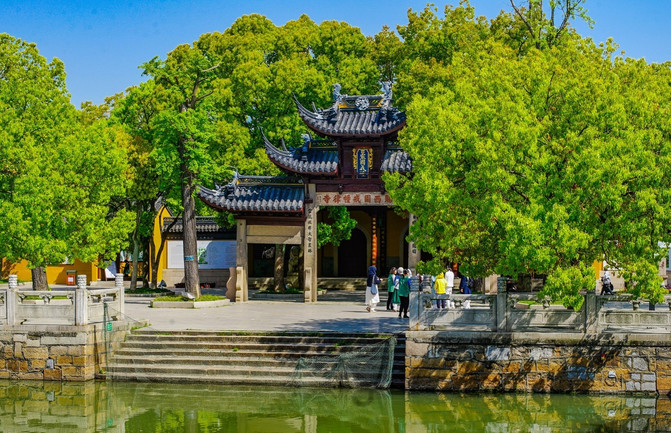

To get to Xiyuan Temple, you must first cross the Changmen Canal outside its south gate. There are two bridges on the river outside this door, one is called Ford Bridge and the other is called Smart Bridge.
Most of the existing temples in Xiyuan Temple were built in the late Qing Dynasty and early Republic of China. It is the largest temple in Suzhou City. On the central axis from south to north, there are three-wide archway, mountain gate, Jingang Hall, free life pond, Daxiong Hall, and Sutra Tower.
Zhaobi is located at the outermost periphery of the temple, with yellow walls and black tiles, and double dragons winding on the top. It can be said to be the barrier of the temple. On the front are the four characters "Jiedanglu Temple" written.
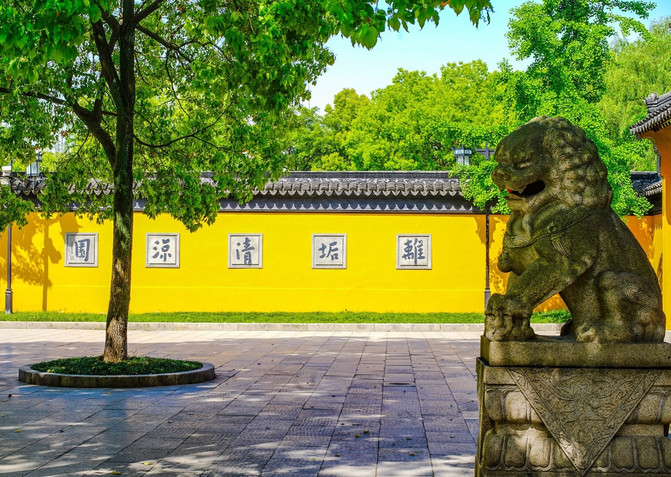


The seat of the Tianwang Hall faces south in the north, with a flat roof and curved eaves. The location of the Tianwang Hall is equivalent to the avant-garde of the temple and plays a role in protecting the temple.

The Daxiong Hall is the central building of the temple. It was built in the late years of Guangxu. All Liang Fang were painted in Soviet style. A plaque of "Xiqian Yingshi" hangs on the eaves of the Fang. Daxiong Hall is one of the most important buildings in a temple.


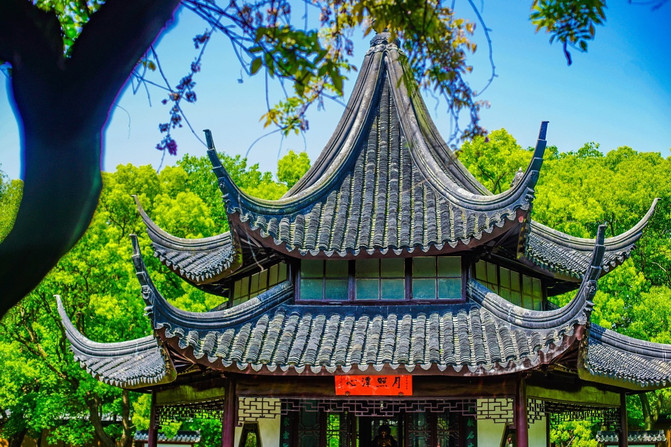
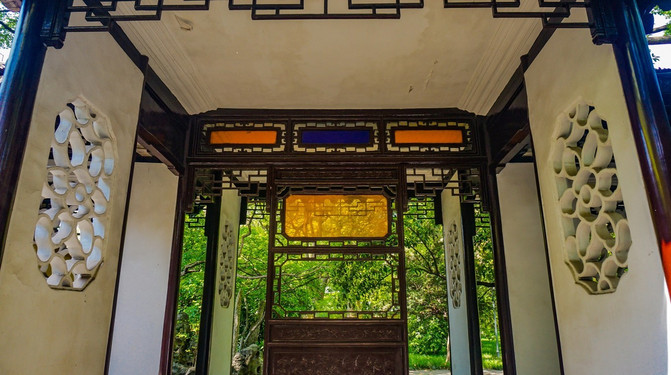

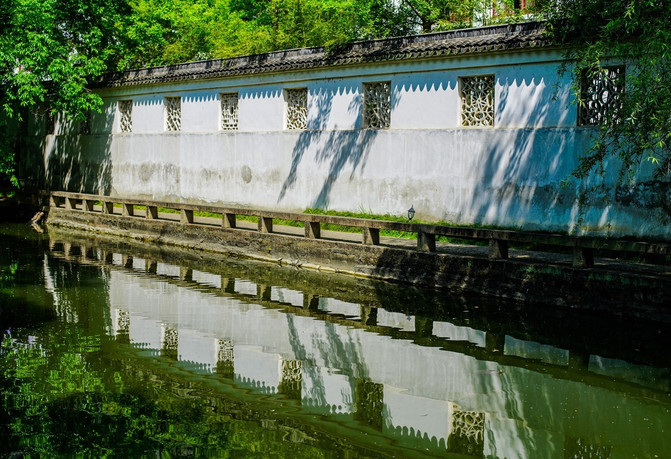

Needless to say, the scenery in the ancient temple is naturally unnecessary. In the West Garden, by the pool, it is typical of Suzhou garden style, delicate and elegant, and full of ancient charm.
The water circles the garden, and then runs from the lower part of Luohan Hall to the Xiangji Pool in front of the main hall. It bends and bends, sometimes in the light and sometimes in the dark, and then extends behind the warehouse.




There is a quiet place on the northwest side of the Siyan Hall. It is surrounded by water on three sides, and a platform is built with stones in the middle. It is surrounded by paths and trees are sparse.



When you enter the temple, the surrounding environment will immediately give people a sense of tranquility, and people's words and behaviors will become soft without realizing it. I also saw people in twos and threes playing chess, taking a walk or taking a nap. I could smell the laid-back atmosphere that belongs to local people.


Perhaps this is the charm of Xiyuan Temple, just like Suzhou now, which has more than just ancient charm. Ancient charm and new brilliance blend and collide here, exuding endless vitality and charm.
tips
Tickets:
5 yuan, three incense sticks.
Opening Hours:
7:30-17:30
Fireworks and Slow Life in Suzhou: Twin Towers Market
This online celebrity market Shuangta Vegetable Market is located in the center of Suzhou's Ancient City, adjacent to Pingjiang Road and Guanqian Street. You can reach it by bypassing the Guantaiwei Bridge next to Yejia Lane. Here, you can collide with the strong market atmosphere of Gusu City before.
This place was originally a vegetable market. After the renovation, the internal and external design have been completely upgraded. The overall vegetable market has taken on a completely new look, but what we still feel is the familiar shouts and warm vegetable market atmosphere. What we bring to the people is still the most familiar fireworks.



Another part of the market is the snack square. All kinds of local Sugar-style snacks can only be described as overcrowded at a glance. Many snacks have to be purchased in long queues. Perhaps what everyone likes is this lively atmosphere of fireworks.






The Twin Towers Market carries the creative aesthetics of the city, showing everyone a picture of the historical heritage of human relations and the vitality of parents. Nowadays, it has become a check-in spot for Suzhou's new Internet celebrities. It attracts not only local residents, but also many tourists, making it a place for young people to pursue fashion!
tips
Address:
Gusu Fresh Food·Shuangta Market, Zhonglou New Village, Shuangta Street, Gusu District, Suzhou City, Jiangsu Province
Those Suzhou museums: Su Bo
The designer of Suzhou Museum is the famous world-class architect I.M. Pei. Just looking at the designer is enough to attract too much attention. Not to mention that she is the best design work in itself. It carries Suzhou's rich historical and civilized heritage of more than 2500 years. It is designed with geometric lines to express the Zen meaning, and is integrated with the Xiaojiabihu gardens here. Become a museum in China that highlights classic cultural temperament and distinctive regional characteristics. It is an artistic masterpiece of tradition and modernity, inheritance and innovation.





The main courtyard is surrounded by the new museum building on the east, south and west sides, and is adjacent to Humble Administrator's Garden on the north, accounting for about one-fifth of the new museum area. This is a creative landscape park carefully built on the basis of classical garden elements. It consists of a cobblestone pond, a rocky rockery, a straight curved bridge, an octagonal pavilion, a bamboo forest, etc. It is different from traditional Suzhou gardens, but not divorced from China's humanistic atmosphere and charm. There are multiple doorways leading to the Shanshui Garden, allowing visitors to see the modern version of the Jiangnan garden and waterscape scenery from all angles.


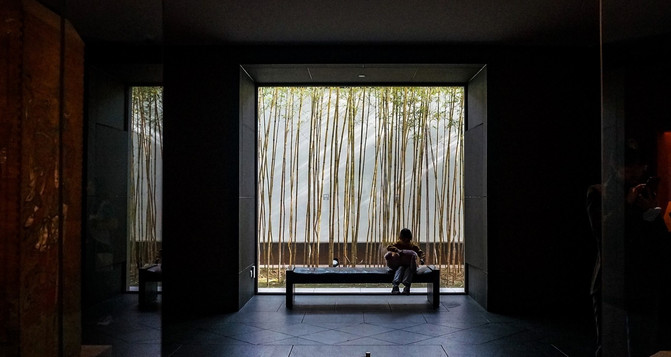

The Soviet-style feeling of blue tiles and white walls, and the garden landscape composed of fake stone rockery, form a vivid painting so harmoniously, allowing tourists to stay in the painting, giving people the feeling that they are not visiting a museum but visiting a garden. feeling.


The main courtyard of the museum is an extension of the architectural style of Humble Administrator's Garden in the north and a modern interpretation. The color adopts traditional powder walls and black tiles as elements, absorbs the charm of traditional houses, and draws on the style of classical gardens. It resembles the spirit rather than the shape, thus making the entire building adapt to the style of the ancient city and integrates with the urban texture of Suzhou. It adds new explanatory connotations to Jiangnan architectural symbols.



Classical and modern, inheritance and subversion, Subori's exhibition is just like her design concept. In addition to classic cultural relics, the exhibition also has the unique fragrance of crabapple. It starts from the discovery journey of Dazu Stone Carvings and leads everyone to explore its unique charm. Feel important achievements in the protection and inheritance of world cultural heritage.






On the other side is a series of themed paintings by Wang Huaxiang.
Against the background of the COVID-19 epidemic, national conflicts, racial discrimination, the world's century-old changes and a community with a shared future for mankind, the painter uses paintings to express his state, worries and responsibilities, intended to declare war on hostility, injury, war, destruction, short-sightedness, and tears.
Separation is both a sight and a worry for the future.
He has worked tirelessly for decades, experiencing countless environmental pressures, conceptual pressures, and instigation of inner desires such as temptation, vanity, delusion, and arrogance. Just like this world, his heart is also a dirty and turbulent battlefield. This exhibition is a reflection on these issues.


tips
Address: No. 204, Northeast Street, Suzhou City
Opening hours: 9:00-17:00 every Tuesday to Sunday (no admission at 16:00), closed every Monday (except national holidays)
Tickets: Free. You need to make real-name reservations in advance through Suzhou Museum official website, Subo official Weixin Official Accounts or Suzhou Museum app and other channels, and swipe your ID card when entering the museum.
Those Suzhou museums: Zhong Wang Fu
The Zhong Mansion next to Subo is the residence of Li Xiucheng, the loyal king during the Taiping Rebellion. It covers an area of 10650 square meters and a building area of 7500 square meters. The whole building is majestic and magnificent, with twists and turns. It is the most complete collection of offices, residences and gardens in the country. A historical building complex of the Taiping Rebellion.


The pattern of Zhongwang Mansion is divided into three roads: middle, east and west. The main purpose of the repair of Houdong Road is to restore the original appearance of the Fengzhi Guild Hall of the Eight Banner in the late Qing Dynasty, while the main purpose of the maintenance of the West Road is to restore the original appearance of Zhang Luqian's mansion and some buildings in the Buyuan during the Guangxu period of the Qing Dynasty. The Miss Building in the north serves as the library of the museum. The middle road displays the former site of Zhong Wang Fu in the Taiping Rebellion, and the main hall restores the scene of Zhong Wang Li Xiucheng presiding over the military meeting.




The former site of Zhong Wang Fu not only contains thick and simple window lattices decorated with dragon and phoenix and vivid stone lions and other precious relics of the Taiping Heavenly Kingdom, but also contains more than 400 beautiful and elegant Sugar-style beam and square paintings and 9 fresh and beautiful painted murals of the Taiping Heavenly Kingdom.


Suzhou
It has always been the economic, political and cultural center of the Jiangnan region. From the Spring and Autumn Period to the Han Dynasty, it was a developed handicraft city mainly composed of silk fabrics and art crafts. The ancient cultural city of Suzhou is not only a city of gardens, but also a silk house.






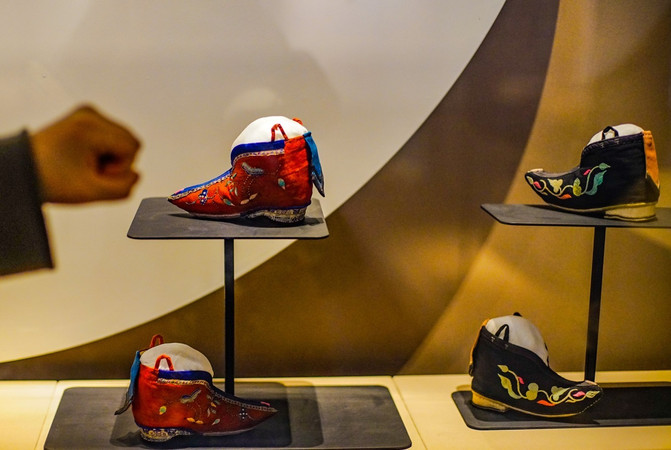
In the old days, mulberry trees were planted all over the pastoral villages in Jiangnan, and silkworm raising and embroidery were necessary skills for girls. The Chinese ancestors spun silk and woven silk, creating silk civilization, giving birth to silk culture, and spreading it to all parts of the world through the Silk Road.
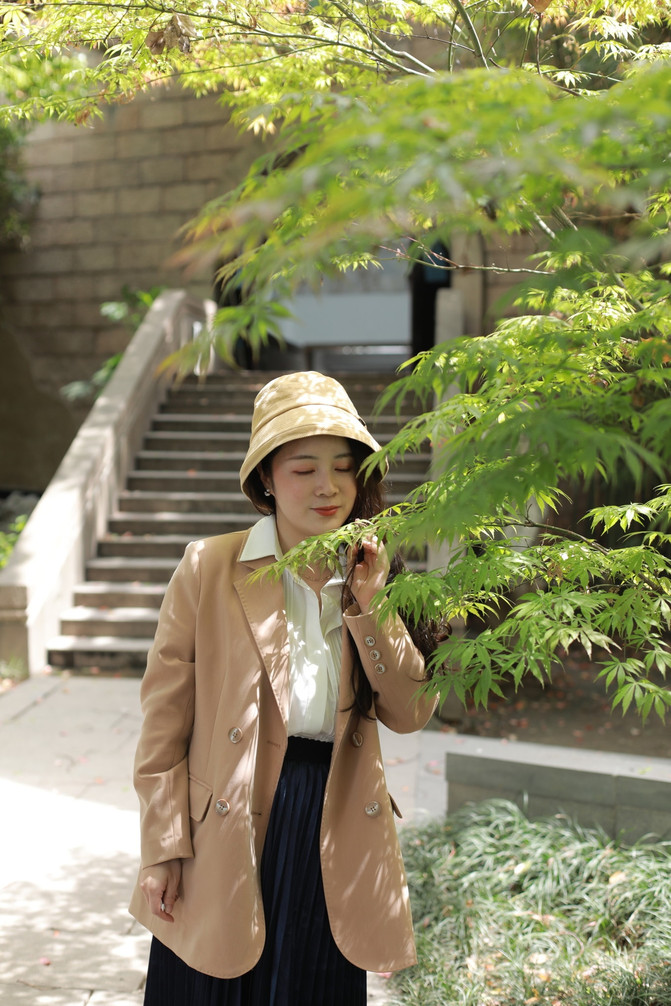



Outside the house of Sangzi Garden is a small mulberry garden, with tall stem mulberry, hanging mulberry, lake mulberry, and fruit mulberry. The corridor leads to the sericulture farm. Scenes such as the kitchen, living room, and bedroom restore the scene of a sericulture family in Suzhou.





tips
Address: No. 2001 Renmin Road, Suzhou, Jiangsu
Tickets: Admission is free (during the epidemic period, you need to register information at the door and check your body temperature before entering)
Opening hours: 9:00-17:00 every Tuesday to Sunday (no admission at 16:00), closed every Monday (except national holidays)
In addition, there are Kunqu Opera Museum and Pingtan Museum on Pingjiang Road, both of which are good places to taste Suzhou culture in detail.
The end of Suzhou
I came to Suzhou for the third time. In just three days, I have seen these gardens, ancient streets, and museums. Even though the spring is bustling, I still feel that Suzhou is a quiet city without any impetuosity. No city can be as peaceful as Suzhou despite more than 2,500 years of history.

Yu Qiuyu put Suzhou in the grand plan of ancient culture in the world and said that Suzhou is one of the most completely preserved ancient cities in the world. After more than 2,000 years of ups and downs,"White-haired Suzhou" is still calm and steady. On the one hand, it is rapidly developing and integrating into the prosperity of the world, and on the other hand, it is leisurely and free.
Being in the world, but not competing with the world. Because it's different.
--Suzhou is well deserved.


I am @ Bloomberg Yaya Travel to the World or Yaya Travel Notes who will always be on the road even by myself. Welcome to follow me and travel to the world with me ~!
Previous Article:Taste Zhouzhuang in a different way and spend a different year
Next Article:Visiting Zhangjiagang in autumn is the right time to study parent-child
